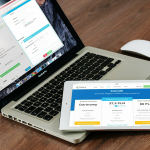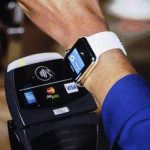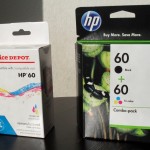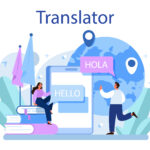Cold Emails Are Far From Dead – Here’s Why
Cold emails may have been around for quite awhile, but that doesn’t mean they’re outdated. It just means they need an update.
The problem is that some people don’t know how to write emails that actually work.
Here, I’ll talk about how to write cold emails that people open and respond to as well as why they’re still an effective outreach method.
3 Reasons Why Cold Emails Are Not Dead
Now for the meat of what I’m trying to say: cold emails are far from being dead. Here are three reasons why.
The stats don’t lie
When the statistics are as compelling as the ones surrounding cold emails, it’s hard to ignore.
For example, Jon Youshaei of EveryVowel and Shane Snow of Contently tested how cold emails perform by sending 1,000 cold emails to professionals. Out of the 707 emails that arrived successfully, 45.5% were opened.
To put that in perspective, the average open rate for a business-related mass email is about half that, according to stats compiled by ConstantContact and MailChimp.
The stats aren’t lying. Cold emails work if you do them right.
Personalization is effective
How did Snow and Youshaei’s test go so well? Personalization, they say.
They personalized every single email, using the person’s name and/or company name.
“Tactics for optimizing sales emails are well and good,” Snow writes. “But they’re not as important as personalized research and sender/sendee fit.”
Using the person’ name is important, but it’s also about them being the right “fit.” That’s why research is so important. Knowing your leads is part of the personalization process.
Starting with solid leads works
Speaking of knowing the recipients, that’s my next point. It’s so important to know each and every lead, that way you can ensure they’ll want your product or service. You’ll waste less time and they won’t be annoying.
The best tool for finding solid leads is LinkedIn Sales Navigator. It’s a premium account that helps you find a lot of your target audience at once.
With Sales Navigator, you get access to the Advanced Search feature, which allows you to filter your searches by:
- Industry
- Location
- Seniority level
- Keywords
- And much more…
In just a few clicks, you can see profiles of hundreds of people who probably want what you’re offering.
You can even bookmark these profiles by putting them on a leads list. Then you can use a LinkedIn email finder to export the email addresses in one batch. And then you can start sending cold emails.
How to properly write cold email
Here are some clear steps you can implement in your next cold email marketing campaign. Using these methods will increase your chances of engagement.
Keep the subject line short and sweet
The subject line is the first thing your leads see. They’ve never heard from you before, so this is their first impression. You have to make it count.
That’s why the subject should be short, to the point, and relevant. Try to use as few words as possible. It will look more natural and it won’t get cut off by the preview feature. A great example subject line is “Quick question for you.”
It can even be one word. The shorter, the sweeter (in general).
Remember that cold email test from Jon Youshaei of EveryVowel and Shane Snow of Contently? It included A/B testing for subject lines.
Here were their open rates for both subject lines they tested:
- “Quick Question” = 51.2% opens
- “15 Second Question for Research on Annoying Emails” = 48.8% opens
Both are at about 50%.
But it seems the subject line did more than get people to open the emails. The subject lines warmed up the leads enough that they responded:
- “Quick Question” = 66.7% of openers replied
- “15 Second Question for Research on Annoying Emails” = 33.3% of openers replied
Strive for simplicity
Just like the subject line, the body of your email should be as short as possible and get right to the point.
Simplicity means you don’t want to use more than one font or color, and don’t include links. First of all, spam filters will flag it. Secondly, you want just one call-to-action: respond to the email (not click a link).
Personalize the opening line
Personalization, as we’ll talk more about below, is the key to cold emails. That’s why your opening line should be specific to the person. Use their name in the greeting and mention something they’ve accomplished in their career.
This shows them you did your research and you’re interested in speaking with them specifically.
Make the preview compelling
Take a look at the “preview” line below the subject title in your email inbox. If you’re cold-emailing someone, the preview line will show the first line of your email. How often do you look at that preview yourself before opening an email from someone you don’t know?
My guess is pretty often.
That’s why this preview is almost as important as the subject title.
It’s also why the opening line of your email should be as personalized and compelling as possible. It shouldn’t sound like you’re about to sell them something (because you shouldn’t be selling in the first email). And it’s best not to mention your company name or position right away.
Instead, make the opening line about them, as you did with the title. After your personalized greeting, you can say something like:
- “I noticed you were interested in…”
- “Congrats on the new job!”
- “I heard you were looking for…”
What other compelling ideas for cold emails do you have? Send them our way!















